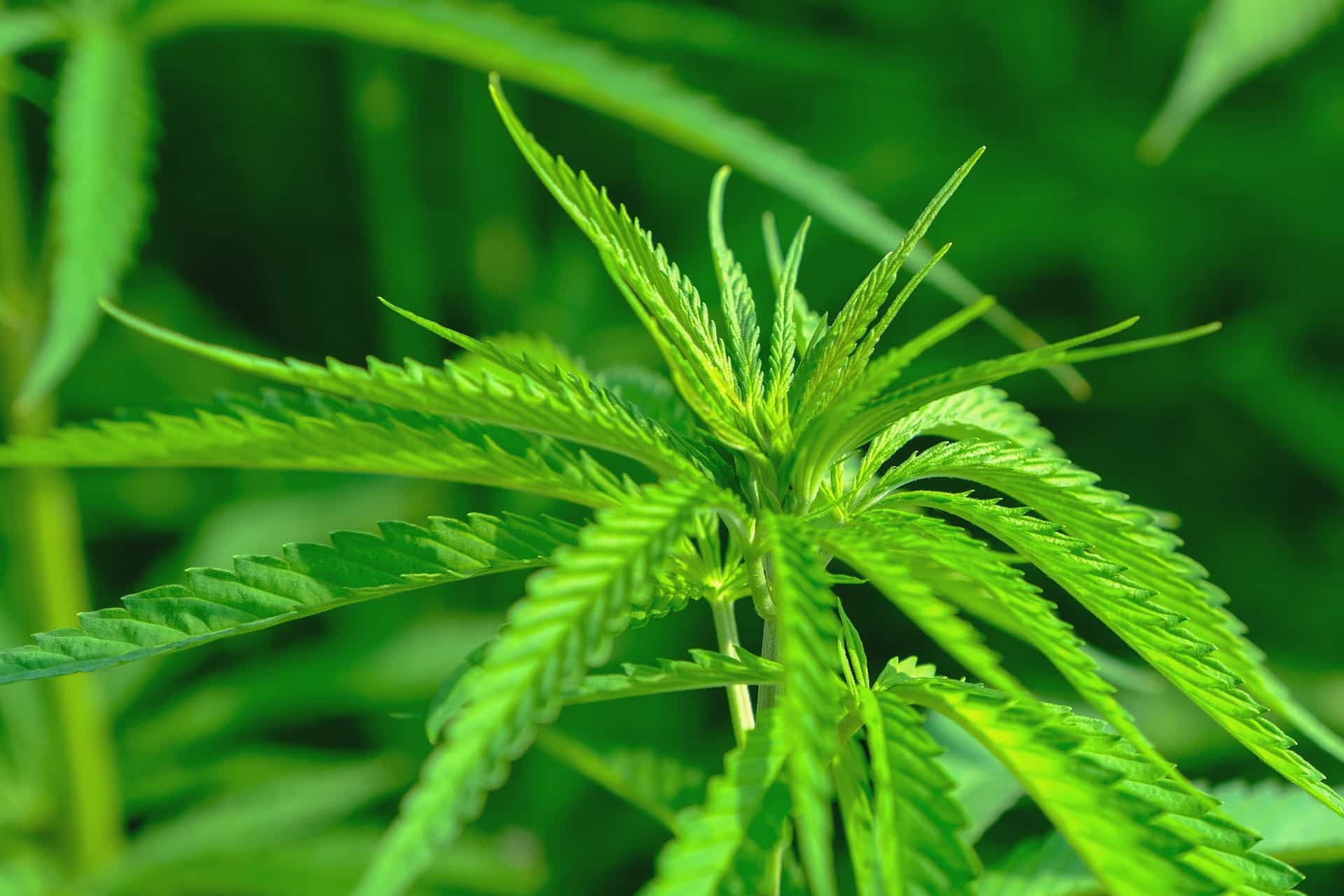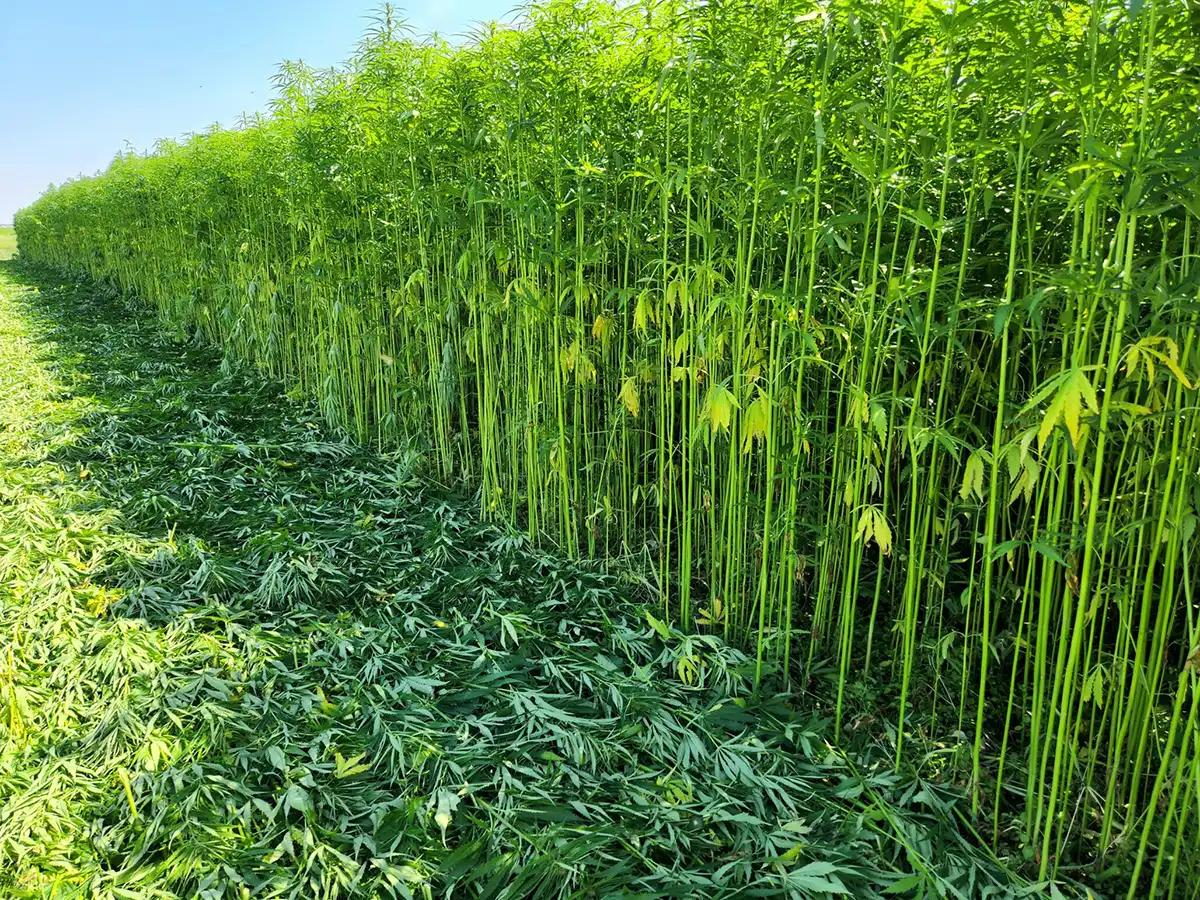In Canada, the demand for high cannabinoid hemp varieties has been steadily increasing over the past few years. While industrial hemp varieties that were approved for cultivation in Canada in the past had low levels of cannabinoids such as CBD or CBG, the demand for high cannabinoid varieties has changed the game for the hemp industry in Canada.
It’s just one recent innovation that is fueling what might be called a “green revolution” in Canada’s cannabis sector, whether that cannabis be in the form of industrial hemp or varieties used for medical or recreational purposes.
“Between 2018 and 2021, there was a significant increase in the production and harvesting of flowers for cannabinoids extraction in Canada. Processors who extract cannabinoids from hemp requested varieties that have more than one to 2% cannabinoids, which the grain and fibre varieties typically lacked,” notes Jan Slaski, principal researcher for InnoTech Alberta.
But then came April 21, 2021. It was a huge day for industrial hemp in Canada. It was on that day that Health Canada released its latest list of approved hemp cultivars, which for the first time included high-cannabinoid varieties.
The new varieties that were introduced offered up to 12% cannabinoids, which led to a spike in production in 2020 and 2021. This boom in demand was similar to what happened in the U.S. market in 2019 and 2020 when half a million acres of hemp were grown predominantly for cannabinoids.
The Canadian market, however, stabilized after the initial spike. The hemp industry in the U.S. is still relatively new, and the market is therefore volatile and not well-established. The acres of hemp being grown in Canada have stabilized at a healthy level, with only 3% of Canadian acres being dedicated to high-CBD varieties.
As of April 2023, there are 84 industrial hemp varieties allowed for commercial cultivation in Canada, and about a dozen of them are high-CBD or high-CBG varieties.

Taking Cannabis to New Heights
Cannabis is a hot topic in Canada these days, especially since it became legal for recreational use in 2018. On the recreational and medical side, Aurora Cannabis is taking cannabis to the next level by using science to breed and develop better cultivars of the plant. This company has the country’s largest research and development facility in Comox, British Columbia, with an impressive 20,000 square feet of space. They test nearly 10,000 unique genotypes each year.
Aurora is not only involved in breeding cannabis, but it also grows, processes, packages and sells it directly to patients and retailers. They focus on production traits, such as yield and disease resistance, which are important to growers, as well as quality traits, such as aroma and potency, which are important to consumers.
In order to develop new cultivars, the company uses consumer research and focus groups to help them make choices. They also have a DNA lab and run genetic markers to screen materials and select genotypes that they like. They breed for potency, which is currently a very popular trait in the recreational market.
One of the company’s recent successes is the launch of a new product called Valour, launched into Aurora’s medical program which serves veterans among many others. The company had a group of veterans come to their facility to tour the greenhouse and give input on the kinds of things they liked. This input helped the company choose the product they eventually launched as Valour, which has been a huge success, says Charles Pick, senior vice-president science and innovation at Aurora.
On the hemp side, the industry has been evolving rapidly over the past few years as well, driven by changing consumer demands and preferences. In 2021, the majority of hemp production in Canada was focused on food. In 2022, there was a shift towards dual-purpose or single fibre usage type varieties, indicating a changing trend in consumer preferences.
One major driver of this change is sustainability. Consumers are increasingly concerned about the carbon footprint of the products they use and are looking for more eco-friendly options, Slaski says.
Hemp, as a crop, has the potential to be a major contributor to a carbon-neutral economy, as it is a high biomass producer that extracts a lot of carbon from the environment. The Canadian hemp industry is now focusing on developing programs that promote sustainability, such as carbon capture and lifecycle assessment, particularly for fibre-type varieties. This includes developing scorecards for hemp-based products, which will allow consumers to make informed choices about the sustainability of the products they buy.
On the food side, consumers are demanding organic products with proven protein and fatty acid profiles and proven health benefits. There is also a growing demand for new formulations of hemp-based snacks, bars, and other food products that are convenient and easy to consume on-the-go, Slaski says.
“Overall, the Canadian hemp industry is undergoing significant changes driven by evolving consumer preferences. Sustainability and health are key drivers of these changes, and the industry is responding by developing new products and programs that promote these values,” Slaski adds.

The Future
Cannabis cultivation has come a long way from its illegal roots, Pick notes, and now scientists are actively researching ways to improve the quality and yield of the plant. One area of focus is autoflowering genes, which control when the plant flowers. Currently, most cannabis grown indoors or in greenhouses is photoperiod sensitive, meaning it will only flower when it receives an equal amount of light and dark.
This can be controlled with lighting, but it can also limit outdoor cultivation as plants won’t flower until late in the season. Additionally, there’s a risk of early frost damaging the flowers.
However, researchers have discovered autoflowering versions of cannabis that flower independently of lighting conditions.
“Unfortunately, these cultivars typically don’t produce as much potency or yield as photoperiod-sensitive cultivars. We’re working to identify the genes responsible for autoflowering and associated traits, with the goal of creating autoflower cultivars that can match the quality and yield of photoperiod-sensitive plants,” Pick says.
Another focus of medical and recreational cannabis research is disease resistance. With limited options for chemical control due to inhalation concerns, genetic resistance is crucial. The most common disease affecting cannabis is powdery mildew, but researchers have found two separate sources of powdery mildew resistance genes, which can be used in breeding to create disease-resistant cultivars.
Finally, researchers are studying the genetics behind aroma and potency to create unique and desirable cultivars for consumers. With more research and the identification of genetic markers for various traits, scientists hope to improve cannabis cultivation efficiency and quality in the future.
One of the biggest challenges facing the cannabis industry is catching up on the century of innovation that other crops have had access to, Pick adds. Breeding takes time, but scientists are working hard to develop new varieties of cannabis that can rival the productivity and disease resistance of other crops. One major change on the horizon is a move from clonally propagated cannabis to hybrid seed. Cloning is time-consuming and expensive, and hybrid seed has many advantages, according to Pick.
While the hemp side of the industry moved to seed a long time ago, one exciting area of focus is breeding new varieties of the plant. In particular, the hemp industry is looking for early-maturing, high-cannabinoid varieties of hemp that can grow well in specific soil and climatic conditions.
In Alberta, for example, the Alberta Hemp Alliance is leading a project to breed fibre varieties that are adapted to the region’s unique conditions. The goal is to avoid importing varieties from other jurisdictions and instead develop regional varieties that are specifically suited to the needs of farmers and other hemp producers, Slaski notes.











